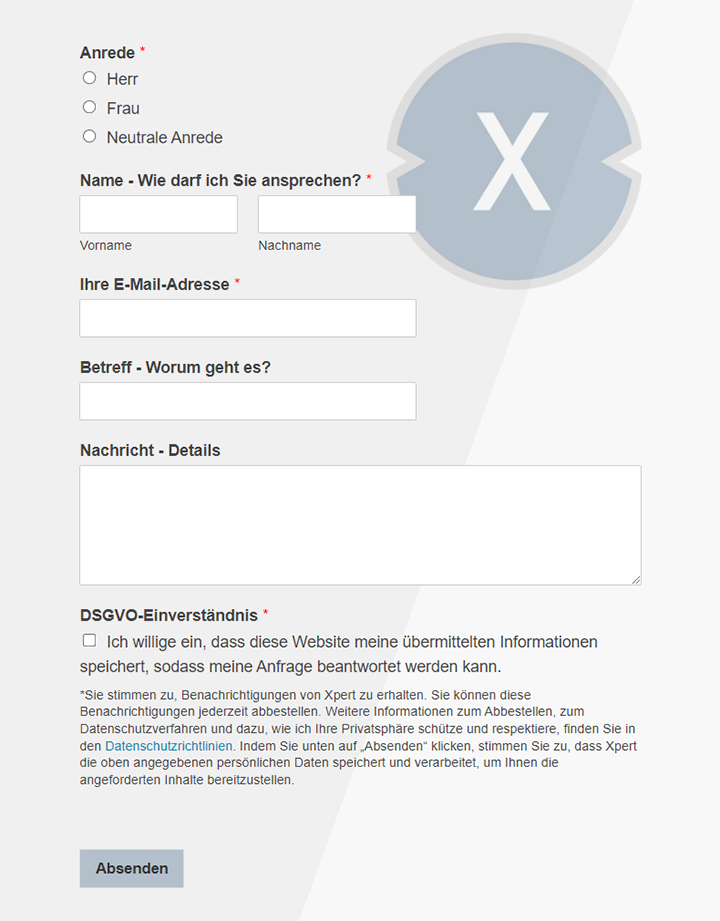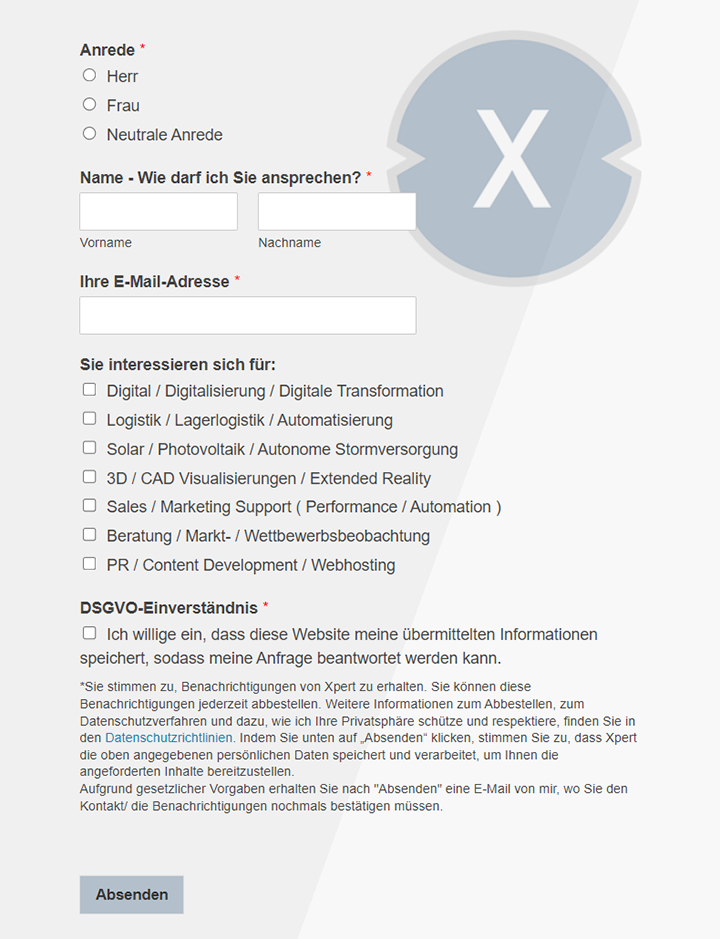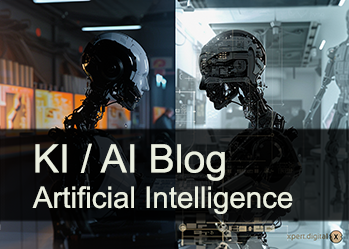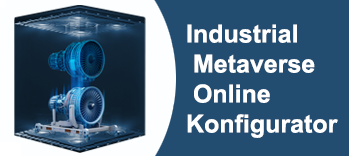The silent revolution of heavy-duty robots in mechanical engineering: Why AI is now making the difference for the strongest robots
Xpert pre-release
Language selection 📢
Published on: August 18, 2025 / Updated on: August 18, 2025 – Author: Konrad Wolfenstein

The silent revolution of heavy-duty robots in mechanical engineering: Why AI is now making the difference for the most powerful robots – Creative image Xpert.Digital
Stronger than ever before – and now even smarter: This is what the new super robots can really do
### Forget the factory floor: These robot giants are now conquering construction sites and wind farms ### No more cages needed: How heavy robots are becoming safe teammates for humans ### The answer to the skills shortage? These robots are taking on the toughest jobs in the world ### Clash of the Titans: It's not power, but software that decides who builds the best robot ###
The Evolution of Strength: Latest Developments in High-Performance Heavy-Duty Robots
The heavy-duty robotics sector is undergoing a profound transformation that goes far beyond simply increasing payload and reach. Recent developments demonstrate a paradigm shift toward a holistic approach that emphasizes intelligence, adaptability, usability, and the development of new application areas. Software, artificial intelligence (AI), and advanced mechatronics have become the primary value drivers, enabling these powerful machines to perform complex tasks in dynamic environments, often in direct collaboration with human workers. Key trends include the increasing blurring of the boundaries between traditional industrial robots and collaborative systems (cobots), expansion into sectors such as construction and renewable energy, and the growing importance of total cost of ownership (TCO) and sustainability. These developments define the next generation of heavy-duty robots, which are not only stronger but, above all, smarter, more flexible, and more accessible.
The new generation of heavy-duty robots: Redefining power and precision
The heavy-duty robot market is evolving from a pure competition for maximum payload to a diversified landscape where application-specific performance and efficiency are paramount. Leading manufacturers differentiate their products through a combination of power, speed, compactness, and intelligent design.
Defining the modern heavy-duty class: More than just raw power
Heavy-duty robots are designed to handle loads typically starting at 250 kg and/or with a reach of over 4 meters. They are the backbone of industries such as automotive production, mechanical engineering, foundries, and increasingly also the construction industry, where they move massive components such as engine blocks, steel beams, and entire vehicle bodies. The range of payloads is enormous, ranging from several hundred kilograms to the current peak of 2,300 kg.
However, the evaluation of modern heavy-duty robots has evolved. While the maximum payload remains a key criterion, holistic efficiency metrics are increasingly coming into focus. These include the payload-to-weight ratio, the required footprint, energy consumption, and the ability to handle loads with high moments of inertia precisely and dynamically. These criteria reflect a deeper understanding of the total cost of ownership and the requirements of modern, flexible production environments.
Competitive landscape and flagship models (2024-2026)
The market is dominated by established players such as KUKA, Fanuc, ABB, and Yaskawa, while new competitors such as Estun from China are gaining increasing importance. The strategies of these companies demonstrate a remarkable divergence that goes beyond simply maximizing payload.
Fanuc remains the undisputed market leader in the ultra-heavy-duty segment with its M-2000iA series. With a payload of 2.3 tons, the M-2000iA/2300 model is the world's most powerful 6-axis articulated-arm robot and is ideal for tasks that require absolute maximum force, such as lifting entire vehicle chassis.
KUKA pursues a strategy of optimized performance. While the KR FORTEC ultra series offers payloads of up to 800 kg, it is characterized by an exceptionally good payload-to-weight ratio and a compact design. This is achieved through innovative design features such as a dual-arm system that increases rigidity without excessive weight. For palletizing applications, the KR 1000 titan series offers models with payloads of up to 1,300 kg.
ABB positions its flagship IRB 8700 robot as the fastest in its class. With a payload of up to 800 kg (or 1,000 kg with the wrist tilted), it achieves 25% faster cycle times than comparable models. ABB also emphasizes reliability through a simplified mechanical design with only one motor and gearbox per axis, reducing maintenance and lowering the total cost of ownership.
Yaskawa offers a broad portfolio, including the Motoman MH600 with a 600 kg payload. Its parallel joint design ensures high stability and rigidity, which is particularly advantageous when handling workpieces with a high moment of inertia. The GP series is designed for high-speed applications.
Emerging competitors such as Estun and Kawasaki are also entering the market. Estun, China's largest manufacturer of industrial robots, plans to launch models such as the ER 13300 with a 1,000 kg payload in Europe. Kawasaki is expanding its portfolio with the MXP710L (710 kg) and the M-Series, which can handle up to 1,500 kg.
These different approaches demonstrate that the heavy-duty robot market has evolved from a one-dimensional race for the highest payload to a more differentiated competitive landscape. Manufacturers now compete on specialized performance features tailored to specific customer requirements – be it maximum power, efficiency in tight spaces, or maximum speed. This allows users to choose a solution optimized for their individual production conditions, rather than simply opting for the most powerful available model.
Robot giants: The most powerful industrial robots in comparison
In the world of industrial robots, there are some impressive giants that stand out due to their enormous payloads and technical specifications. Manufacturers Fanuc, KUKA, ABB, Kawasaki, Estun, and Yaskawa compete for the top position in this market segment.
The Fanuc M-2000iA/2300 stands out with its exceptional payload of 2300 kg and also features an IP67-protected wrist. KUKA presents the KR 1000 1300 titan PA, a robot with a 1300 kg payload ideal for palletizing applications and a compact 6-axis design. The ABB IRB 8700 scores with 25% higher speed compared to similar models and a simplified design for maximum reliability.
With the MG15HL, Kawasaki relies on a hybrid link mechanism that enables high torques and payloads without additional counterweights. The Yaskawa Motoman MH600 impresses with its parallel linkage design, which guarantees stability even with loads with high moments of inertia.
An interesting newcomer is the Estun ER 13300, a heavy-duty robot aiming to conquer the European market. These robots impressively demonstrate the technological development in industrial automation and the constant innovation of leading manufacturers.
The intelligence engine: AI and software as key differentiators
The most significant advances in heavy-duty robots are no longer purely mechanical in nature. Rather, it is the fusion of robotics with artificial intelligence and advanced software that fundamentally expands the capabilities of these machines and revolutionizes their operation.
From automation to autonomy: The impact of artificial intelligence and machine learning
AI and machine learning (ML) are transforming industrial robots from rigid, pre-programmed tools into adaptive, intelligent systems that can perceive, decide, and learn. This change is crucial for managing variability and complexity in modern manufacturing and logistics processes.
Advanced Perception (The “Eyes”)
Modern robots no longer operate blindly. They are equipped with sophisticated sensor systems, including 2D and 3D vision systems, LiDAR, and stereo cameras, which give them a comprehensive understanding of their surroundings. This perceptual ability is powered by deep learning algorithms for object detection, localization, and segmentation, making their use in unstructured environments possible.
Use case – Bin picking: Systems such as KUKA.SmartBinPicking use advanced image processing to identify randomly arranged objects in a bin, determine their gripping points, and safely remove them – a task that is virtually impossible with traditional, rule-based programming.
Use Case – Construction Site Recognition: Research is actively developing YOLO (You Only Look Once)-based object recognition models. These enable robots to identify workers, vehicles, and building structures on dynamic construction sites, which is a prerequisite for autonomous operation in such complex environments.
Intelligent task management (The “Brain”)
AI not only serves to see, but also to act. ML models enable robots to adapt their actions to changing conditions in real time.
Use Case – AI-Assisted Depalletizing: FANUC uses AI-driven vision systems to enable robots to autonomously unload mixed pallets with variable carton sizes and positions. Such systems can process over nine cartons per minute, replacing extremely physically demanding manual labor.
Use Case – AI-Assisted Welding: Next-generation systems, such as NovAI™, leverage machine vision and AI for real-time adaptive welding. They can track welds, adjust for gaps and tack locations, and dynamically correct welding parameters. This automates processes previously considered too inconsistent for robotics due to component tolerances and is a critical advance for heavy construction in industries such as shipbuilding.
The Usability Revolution: Simplifying Complexity with Advanced Software
Traditionally, programming industrial robots was a highly specialized task requiring in-depth knowledge of proprietary programming languages such as KRL (Kuka) or RAPID (ABB). This represented a high barrier to entry and slowed the implementation of automation solutions.
Next-generation operating systems
Leading manufacturers are responding to this bottleneck by developing new, intuitive operating systems designed to democratize robot operation.
KUKA iiQKA.OS: A modern, Linux-based operating system with a web-based user interface (iiQKA.UI) designed to be as easy to use as a smartphone. It supports instruction-based programming, enables virtual commissioning, and is designed to foster an entire ecosystem of third-party apps and hardware (the "Robotic Republic").
FANUC iHMI: The "Intelligent Human Machine Interface" is a graphical, touchscreen-based user interface designed to drastically reduce setup and training times. It integrates planning, editing, and improvement tools such as cycle time estimation and maintenance management into a single, clear interface.
Democratization of programming
The trend is clearly moving toward code-free or low-code interaction. Visual programming environments with drag-and-drop functionality and graphical workflow editors are becoming standard. "Teaching by demonstration" methods, in which an operator manually guides the robot arm through a movement (hand guidance) or uses external tools such as Wandelbot's Tracepen to "show" the robot a task, are further lowering the programming hurdle.
The power of simulation (digital twins)
Offline programming and simulation software such as KUKA.Sim or ABB RobotStudio has become an indispensable tool. It enables companies to virtually design, test, and optimize entire robot cells before the physical hardware is even ordered. This "virtual commissioning" significantly reduces real-world setup time, minimizes risks through early detection of collisions or accessibility issues, and allows programming to be carried out in parallel with hardware procurement.
These developments point to a fundamental shift in robotics. Manufacturers are no longer simply selling a robot arm with a controller, but are building entire digital platforms. These include operating systems, app stores, partner networks, and cloud connections. KUKA is actively promoting a partner ecosystem (“Robotic Republic”) for iiQKA with open interfaces for third-party providers. At the same time, platforms such as ctrlX AUTOMATION from Bosch Rexroth enable the control of robots from different brands (ABB, KUKA, FANUC) via a unified interface. This development reflects the shift in the smartphone market, where the value of a device is largely determined by its app ecosystem. The battlefield of competition is thus shifting from pure hardware specifications to the strength and openness of the software ecosystem. For users, this means less dependence on a single manufacturer, faster innovation, and access to a wider range of specialized solutions. The robot becomes the hardware platform on which a software-defined automation solution is built.
🎯🎯🎯 Benefit from Xpert.Digital's extensive, fivefold expertise in a comprehensive service package | R&D, XR, PR & SEM

AI & XR-3D-Rendering Machine: five times expertise from Xpert.digital in a comprehensive service package, R&D XR, Pr & SEM – Image: Xpert.digital
Xpert.Digital has in-depth knowledge of various industries. This allows us to develop tailor-made strategies that are tailored precisely to the requirements and challenges of your specific market segment. By continually analyzing market trends and following industry developments, we can act with foresight and offer innovative solutions. Through the combination of experience and knowledge, we generate added value and give our customers a decisive competitive advantage.
More about it here:
New mechatronics: How heavy-duty robots break physical boundaries
Advanced Mechatronics: The Physical Evolution of Power
In parallel with the rapid advances in software and AI, the physical form of heavy-duty robots is also evolving. Innovations in design, materials science, and end-effector technology are critical to translating this increased intelligence into mechanical performance.
Innovations in design and materials: More performance with less mass
A key trend is the development of robots that are lighter and more compact while offering the same or higher payload. The KUKA KR Fortec, for example, is up to 700 kg lighter than its predecessor, while the KR FORTEC ultra series boasts a class-leading payload-to-weight ratio. This weight reduction lowers the requirements for the foundation, reduces energy consumption, and enables use in more densely populated and spatially constrained production facilities.
This is made possible by advanced kinematic concepts. KUKA's dual-arm system and Fanuc's highly rigid arm designs improve precision and reduce vibration at high speeds and with heavy loads. Kawasaki's hybrid link mechanism eliminates the need for bulky counterweights, increasing the robot's workspace.
Another important aspect is modularity. Robot series such as those from KUKA (KR Quantec, Fortec, Fortec ultra) are increasingly sharing common components, such as the central hands. This simplifies maintenance and reduces spare parts inventory costs for customers operating a diversified robot fleet.
For use in extreme environments, specialized variants such as "Foundry" or "Hygienic" versions are now standard. These models feature IP67-rated wrists and bodies, heat- and corrosion-resistant coatings, and food-safe lubricants, enabling their use in foundries, forges, or food processing.
Next-generation end effectors: The robot's hands
The grippers at the end of the robot arm, called end effectors, are evolving from simple pneumatic clamps to complex mechatronic systems. They are increasingly equipped with advanced sensors that give them adaptive functionality. Although still predominantly found in applications with lower payloads, principles from soft robotics and bionics are influencing gripper technology. The goal is to handle a wider variety of object shapes and materials with greater reliability and less effort. For heavy and complex objects, multi-axis, fully driven mechanisms are being developed that enable precise manipulation.
Force-torque sensors mounted on the wrist give the robot a "sense of touch." They enable it to perform sensitive tasks such as precisely joining components, applying a defined force during grinding, or safely reacting to unexpected collisions.
The sensor ecosystem: the foundation for perception and security
Modern heavy-duty robots rely on a rich ecosystem of internal and external sensors. Internal sensors such as motor encoders and torque sensors in the joints are essential for precise motion control. External sensors such as 3D cameras, LiDAR, and ultrasonic sensors provide the data for environmental awareness and the realization of safe human-robot collaboration. Integrated collision and overload protection systems can trigger an emergency stop in the event of a collision or excessive load, thus protecting both the robot and the workpiece. These systems are becoming increasingly sophisticated and offer, for example, pneumatically adjustable trigger thresholds.
Sustainability and efficiency: The focus on total cost of ownership (TCO)
Energy efficiency has become a key design goal. Through lightweight construction, software-optimized motion paths, and energy-saving standby modes, manufacturers are reducing their robots' energy consumption. This not only reduces operating costs but also improves the environmental impact of the automation solution. Simplified mechanical designs, such as those pursued by ABB with only one motor per axis, and modular construction lead to higher reliability (Mean Time Between Failures, MTBF) and faster repair times (Mean Time To Repair, MTTR), further reducing total cost of ownership.
Advances in mechatronics interact closely with developments in software and AI. A stiffer, less-vibrating arm design (hardware improvement) is a prerequisite for advanced motion control software (software improvement) to move the robot faster and more precisely. AI-based path planning algorithms can then calculate the most energy-efficient trajectory for precisely these kinematics. Integrated force-torque sensors, in turn, provide real-time feedback, enabling the control software to react to unforeseen forces and make the process more robust. The performance of a modern heavy-duty robot is thus an emergent property of the overall system, in which mechanics, sensors, and software are inextricably linked.
Expanded horizons: New fields of application for heavy-duty robotics
Technological advances in AI, software, and mechatronics are enabling the use of heavy-duty robots in industries that previously relied on manual labor or rigid automation. Robots are leaving the controlled factory floor and conquering dynamic and unstructured environments.
The automated construction site
The construction industry faces enormous challenges due to a shortage of skilled workers, high safety risks, and increasing productivity pressures. As a result, 81% of construction companies plan to introduce robots in the next ten years.
Applications: Heavy-duty robots handle massive components such as steel profiles, precast concrete elements, and modular housing units. They are used for automated production, for example, for drilling, riveting, and fastening large components. A specific example is the Fischer BauBot, which was specifically developed for drilling and doweling work on large construction sites. Robots can also be equipped with cutting tools to process concrete and steel parts on-site with high precision.
Key technologies: Success in this unstructured environment depends critically on AI-based object recognition to identify materials and obstacles, as well as robust, mobile platforms.
Energy for the future: Automation in the production of renewable energies
The massive expansion of renewable energies requires faster and more cost-efficient production and installation of large components such as wind turbine blades and solar panels.
Wind energy: In the production of wind turbine blades, robots are used for post-processing (trimming, sanding, filling), which improves quality and relieves workers of unhealthy tasks. In Automated Fiber Placement (AFP), robotic arms precisely place carbon fiber or glass fiber strips to produce lighter and more stable rotor blades. Special robot systems process the blade root (sawing, milling, drilling) and reduce cycle times by up to 50% compared to conventional machines.
Solar energy: Companies like Charge Robotics and Terabase are developing mobile "factories" that automate the pre-assembly and installation of entire sections of solar modules directly on solar farm construction sites, potentially doubling productivity. AES's "Maximo" robot uses AI, LiDAR, and machine vision to automate the heavy lifting and installation of solar panels, reducing time and costs by up to 50%. Comau's Hyperflex system is a mobile factory in a semi-trailer that assembles and installs solar trackers directly in the field.
Modernization of heavy industry: shipbuilding and aerospace
Shipbuilding: This traditionally low-automation industry is beginning to adopt mobile heavy-duty robots. Developed by Comau in collaboration with the Fincantieri shipyard, the MR4Weld is an autonomous mobile welding robot that can navigate the unstructured environment of a shipyard to perform welding work on large hull sections. This brings new levels of flexibility and efficiency to the assembly of giant steel structures.
Aerospace: High-precision heavy-duty robots are used for drilling, riveting, and joining large aircraft components such as wings and fuselage sections, where the highest levels of accuracy and repeatability are required.
Closing the loop: The role in the circular economy
Sustainability goals and EU regulations are driving the need for efficient recycling and remanufacturing of complex products.
Automated disassembly: Heavy-duty robots are ideal for disassembling large and heavy products.
E-vehicle batteries: Due to their heavy weight and potential hazards (electrical and chemical), robot-assisted disassembly of e-vehicle batteries is crucial for safe and economical recycling. Research projects are developing robot cells that automatically separate battery modules and cells.
Large-scale electronics and motors: The Fraunhofer Institute is working on robotic systems that use AI and machine vision to automatically dismantle PCs, washing machines, and electric motors to recover valuable materials such as copper and rare earth magnets. This is an important step toward establishing "urban mining."
These new application areas have one thing in common: they move the robot from the highly structured, predictable environment of a factory floor to a dynamic, unstructured, and often harsh "field." This change of environment is the primary driver for technological developments in AI, sensing, and mechatronics. The technical challenge is shifting from optimizing repetitive movements to managing uncertainty. Future success will depend less on incremental improvements in speed or precision and more on breakthroughs in environmental perception, autonomous navigation, and adaptive task planning.
Our recommendation: 🌍 Limitless reach 🔗 Networked 🌐 Multilingual 💪 Strong sales: 💡 Authentic with strategy 🚀 Innovation meets 🧠 Intuition

From the bars to global: SMEs conquer the world market with a clever strategy – Image: Xpert.digital
At a time when a company's digital presence determines its success, the challenge is how to make this presence authentic, individual and far-reaching. Xpert.Digital offers an innovative solution that positions itself as an intersection between an industry hub, a blog and a brand ambassador. It combines the advantages of communication and sales channels in a single platform and enables publication in 18 different languages. The cooperation with partner portals and the possibility of publishing articles on Google News and a press distribution list with around 8,000 journalists and readers maximize the reach and visibility of the content. This represents an essential factor in external sales & marketing (SMarketing).
More about it here:
Growth, opportunities, obstacles: strategies for heavy-duty robotics
The collaborative frontier: Safe human-robot interaction with high payloads
An emerging and, at first glance, contradictory trend is the application of collaborative principles to robots capable of exerting potentially lethal forces. This development is transforming heavy-duty robots from isolated machines into powerful teammates.
Beyond the Cage: The Spectrum of Collaboration
The traditional safety concept of operating heavy-duty robots within protective fences is inefficient and creates a rigid separation between human and machine tasks. However, modern human-robot collaboration (HRC) is not a single concept, but rather a spectrum that ranges from simple coexistence (the robot stops when a human enters its workspace) to close collaboration (human and robot working simultaneously on the same workpiece).
The key advantage of this approach is that, unlike traditional lightweight cobots, HRC-capable industrial robots are not subject to limitations regarding payload, speed, or precision. They thus offer the best of both worlds: the performance of an industrial robot and the flexibility of a collaborative application.
Key technologies for safe heavy-duty HRC
Safe HRC with heavy-duty robots is made possible by a combination of advanced sensor technology and intelligent control functions.
Advanced safety sensing: The foundation of safe HRC is the system's ability to detect human presence and intentions. This is achieved through safety-certified laser scanners, 3D cameras, and even pressure-sensitive floors that generate dynamic, multi-level protective fields around the robot.
Speed and Separation Monitoring (SSM): This is a key collaborative method in which the robot's speed is inversely proportional to its distance from the human. If a human approaches, the robot slows down. If the human gets too close, the robot enters a safely monitored stop. This enables fluid and efficient interaction without physical barriers.
Power and Force Limiting (PFL): Although this is challenging due to the high inertia of heavy-duty robots, advanced control systems and torque sensors in each joint allow even large robots to operate in a force-limited mode for specific tasks. They stop immediately if an unexpected contact is encountered. This feature is often used in manual guidance or handover tasks.
Standardization and risk assessment: The implementation of safe HRC applications is regulated by standards such as EN ISO 10218 and the technical specification ISO/TS 15066. A fundamental prerequisite is always a careful risk assessment of the entire application – robot, gripper, workpiece, and surroundings. Even a robot that is inherently safe can operate a dangerous tool.
These developments are leading to a redefinition of the term "cobot." Traditionally, this term was synonymous with small, lightweight, and inherently safe robot arms. The integration of collaborative functionality into heavy-duty industrial robots is breaking this paradigm. "Collaborative" is evolving from a noun (a type of robot, "a cobot") to an adjective or a feature set ("a collaborative robot application"). The future lies not in the binary choice between a "cobot" and an "industrial robot," but in selecting an industrial robot with the appropriate payload and performance, which is then equipped with the collaborative safety features required for the specific application. This dramatically expands the potential of HRC to areas previously inaccessible to close human-machine collaboration, such as heavy-duty assembly or logistics.
RaaS explained: How companies lower the barrier to entry for robots
The heavy-duty robotics market is poised for sustained growth driven by technological innovations and expansion into new sectors. However, for successful implementation, companies must make strategic decisions that go beyond pure technology evaluation.
Market size and growth forecasts
The global industrial robotics market is a significant and growing sector. Market size forecasts vary depending on the scope and methodology of the analysis, but consistently show a positive trend:
- One analysis predicts growth from USD 33.9 billion in 2024 to USD 60.5 billion by 2030, corresponding to a compound annual growth rate (CAGR) of 9.9%.
- Another study expects growth from USD 16.9 billion (2024) to USD 29.4 billion by 2029 (CAGR 11.7%).
- A third forecast predicts growth from USD 19.9 billion (2024) to USD 55.5 billion by 2032 (CAGR 14.2%).
The specific market for heavy-duty robot platforms was estimated at USD 333.5 million by 2024, with a forecast of USD 446.0 million by 2030 (CAGR 5.0%). The discrepancy with the overall figures highlights that heavy-duty robots represent a high-value, but smaller-volume segment of the overall market.
According to the International Federation of Robotics (IFR), the global operational stock of industrial robots reached a record high of 4.28 million units in 2023, an increase of 10% over the previous year. Although 2024 saw a temporary market contraction, the long-term growth trend is expected to resume in 2025. Asia, particularly China, remains the largest and fastest-growing market, accounting for 70% of new installations.
Key growth drivers and barriers
Growth drivers:
- Skilled labor shortages and demographic change: In many industrialized nations, the shortage of qualified workers is driving the automation of physically demanding and repetitive tasks.
- Industry 4.0 and Smart Manufacturing: The networking and digitalization of production require intelligent and flexible robots as central components.
- Development of new sectors: Growth is increasingly driven by adoption in sectors outside the automotive industry, such as logistics, construction and renewable energy.
- Sustainability and reshoring: Robots improve material efficiency, reduce waste, and enable cost-efficient domestic production.
Obstacles:
- High initial investments: The costs for the robot, its integration and the necessary peripherals represent a significant hurdle, especially for small and medium-sized enterprises (SMEs).
- Integration complexity: Despite more user-friendly interfaces, integrating robots into existing legacy systems and ensuring interoperability can remain challenging.
Strategic imperatives for implementation
For companies considering the use of heavy-duty robots, the following strategic considerations are crucial:
- Shift focus from capital expenditure (CAPEX) to TCO and ROI: Investment decisions should not be based solely on the acquisition price. A holistic analysis of the total cost of ownership (TCO) – energy consumption, maintenance, and availability – as well as the return on investment (ROI) – by higher throughput, improved quality, and reduced labor costs – is essential.
- Leveraging new business models: Models such as Robotics-as-a-Service (RaaS) lower the initial investment barrier by allowing companies to lease robot capabilities as an operating expense rather than as a capital investment.
- Invest in workforce development: Simplifying programming doesn't eliminate the need for skilled employees. Rather, it shifts the required skills from pure code programming to higher-level tasks such as process optimization, system monitoring, and maintenance. Companies must invest in the training of their workforce to effectively manage and collaborate with these intelligent machines.
- Prioritizing software and ecosystems: When selecting a robot, the manufacturer's software platform, its user-friendliness, and the breadth of its partner ecosystem should be key criteria. A strong ecosystem provides access to pre-integrated solutions and future-proofs the investment against changing requirements.
We are there for you – advice – planning – implementation – project management
☑️ SME support in strategy, consulting, planning and implementation
☑️ Creation or realignment of the digital strategy and digitalization
☑️ Expansion and optimization of international sales processes
☑️ Global & Digital B2B trading platforms
☑️ Pioneer Business Development
I would be happy to serve as your personal advisor.
You can contact me by filling out the contact form below or simply call me on +49 89 89 674 804 (Munich) .
I'm looking forward to our joint project.
Xpert.digital – Konrad Wolfenstein
Xpert.Digital is a hub for industry with a focus on digitalization, mechanical engineering, logistics/intralogistics and photovoltaics.
With our 360° business development solution, we support well-known companies from new business to after sales.
Market intelligence, smarketing, marketing automation, content development, PR, mail campaigns, personalized social media and lead nurturing are part of our digital tools.
You can find more at: www.xpert.digital – www.xpert.solar – www.xpert.plus


























